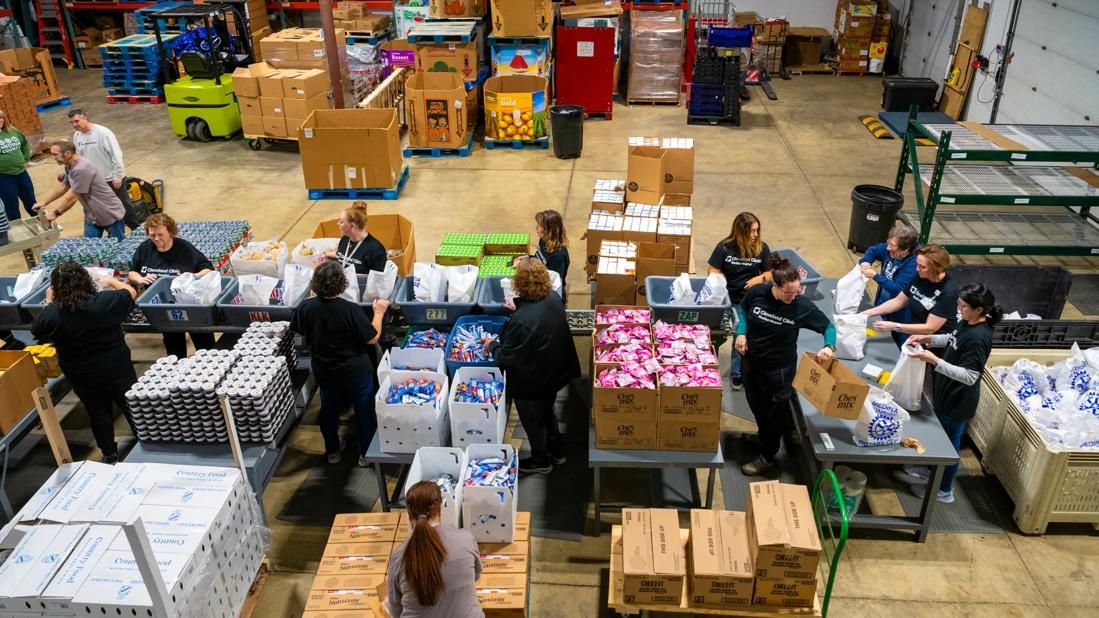Local 12 Investigates Fallout: Contamination, Cancer, and Death – WKRC

Investigative Report: Health and Environmental Crises at the Portsmouth Gaseous Diffusion Plant in the Context of Sustainable Development Goals
Executive Summary
An investigative report examines the long-term consequences of the Portsmouth Gaseous Diffusion Plant (PORTS), a former government-owned uranium enrichment facility. The findings highlight significant challenges to achieving key Sustainable Development Goals (SDGs), particularly those related to health, environmental safety, and institutional accountability.
Analysis of Health Impacts and SDG 3 (Good Health and Well-being)
The investigation presents critical data that directly contradicts official assessments of public health risks, undermining progress toward SDG 3, which aims to ensure healthy lives and promote well-being for all at all ages.
- Elevated Mortality Rates: An epidemiologist’s analysis reveals “shocking” cancer and premature death rates in the county where the PORTS facility is located, directly conflicting with SDG Target 3.4 (reduce premature mortality from non-communicable diseases).
- Contamination Evidence: New evidence of radioactive contamination challenges government reports that claim no existing health threat, raising concerns about exposure to hazardous materials and pollution as outlined in SDG Target 3.9.
- Human Impact: The report documents the personal stories of cancer victims (“Faces of Fallout”), illustrating the profound human cost and the urgent need for health and well-being interventions for affected populations.
Environmental Integrity and its Relation to SDG 6 (Clean Water) and SDG 11 (Sustainable Communities)
The report uncovers evidence of radioactive releases that pose a direct threat to the local environment and the sustainability of the surrounding community.
- Radioactive Releases: The investigation confirms radioactive releases from the plant, threatening the safety of local ecosystems and potentially contaminating water sources, a critical concern for SDG 6 (Clean Water and Sanitation).
- Community Safety: The persistent contamination undermines the goal of creating safe, resilient, and sustainable human settlements (SDG 11), as residents live with the ongoing threat of environmental hazards stemming from the plant’s legacy.
Institutional Accountability and Community Justice in line with SDG 12 and SDG 16
The investigation highlights failures in institutional transparency and underscores the community’s demand for justice and responsible management of industrial legacy sites.
- Challenging Official Narratives: The report’s findings directly undermine a key government conclusion about the plant’s safety, pointing to a need for greater transparency and accountability from public institutions, a cornerstone of SDG 16 (Peace, Justice, and Strong Institutions).
- Legacy of Production: The contamination is a direct result of the plant’s role in the nuclear production cycle, emphasizing the importance of environmentally sound management of hazardous waste throughout its life cycle, as mandated by SDG 12 (Responsible Consumption and Production).
- Community Empowerment: The organization of a town hall meeting provided a platform for cancer patients and their families, amplifying their voices and promoting inclusive and participatory decision-making in the pursuit of justice and responsive institutions (SDG 16).
Analysis of SDGs, Targets, and Indicators
1. Which SDGs are addressed or connected to the issues highlighted in the article?
- SDG 3: Good Health and Well-being: The article’s central theme is the adverse health effects on the community surrounding the Portsmouth Gaseous Diffusion Plant (PORTS). It explicitly mentions “shocking cancer and premature death rates” and features the stories of “cancer victims,” directly linking the environmental contamination to human health and well-being.
- SDG 6: Clean Water and Sanitation: While not explicitly mentioning water, the article discusses “radioactive releases” and “contamination” from a large industrial plant. Such contamination from a “uranium enrichment plant” inherently threatens local water and soil quality, which are critical components of this goal.
- SDG 16: Peace, Justice and Strong Institutions: The article highlights a conflict between the community and official government findings. The investigation “undermining the conclusion of a key government report that states there is no health threat” points to issues of institutional accountability and transparency. Furthermore, organizing a “historic town hall… amplifying the voices of cancer patients and families” is an action aimed at ensuring responsive and inclusive decision-making processes.
2. What specific targets under those SDGs can be identified based on the article’s content?
-
Target 3.4: By 2030, reduce by one third premature mortality from non-communicable diseases through prevention and treatment and promote mental health and well-being.
- The article directly relates to this target by highlighting the “shocking” rates of “cancer and premature death” in the county, which are non-communicable diseases allegedly linked to the plant’s contamination.
-
Target 3.9: By 2030, substantially reduce the number of deaths and illnesses from hazardous chemicals and air, water and soil pollution and contamination.
- This target is addressed through the investigation into “radioactive releases” and “contamination” from the uranium enrichment plant, which are presented as the cause of the illnesses (“cancer victims”) and deaths in the community.
-
Target 6.3: By 2030, improve water quality by reducing pollution, eliminating dumping and minimizing release of hazardous chemicals and materials…
- The article’s focus on “radioactive releases” from the plant directly pertains to the release of hazardous materials into the environment, which would impact water and soil quality.
-
Target 16.6: Develop effective, accountable and transparent institutions at all levels.
- The investigation’s effort to uncover “stunning evidence” that undermines an official “key government report” is a direct challenge to the accountability and transparency of the institutions responsible for monitoring the plant’s environmental and health impacts.
-
Target 16.7: Ensure responsive, inclusive, participatory and representative decision-making at all levels.
- The organization of a “historic town hall… amplifying the voices of cancer patients and families of the victims” is a clear example of creating a platform for inclusive and participatory engagement to ensure the concerns of affected citizens are heard.
3. Are there any indicators mentioned or implied in the article that can be used to measure progress towards the identified targets?
- For Target 3.4: The article implies the use of mortality and morbidity rates as indicators. Specifically, the “cancer and premature death rates in the county” serve as a direct measure of premature mortality from non-communicable diseases.
- For Target 3.9: The “new evidence of contamination” found by the investigation serves as an indicator of pollution levels. The number of “cancer victims” and their stories (“Faces of Fallout”) act as a qualitative and quantitative indicator of illnesses attributable to pollution.
- For Target 16.6 & 16.7: The article implies qualitative indicators. The existence of an investigative report that contradicts official government findings is an indicator of a push for institutional accountability. The organization of a “town hall” serves as an indicator of participatory processes being implemented to include affected communities in decision-making.
4. Summary Table of SDGs, Targets, and Indicators
| SDGs | Targets | Indicators (Implied in Article) |
|---|---|---|
| SDG 3: Good Health and Well-being | 3.4: Reduce premature mortality from non-communicable diseases. 3.9: Reduce deaths and illnesses from hazardous pollution and contamination. |
– Cancer and premature death rates in the affected county. – Number of cancer victims and documented health cases (“Faces of Fallout”). |
| SDG 6: Clean Water and Sanitation | 6.3: Improve water quality by reducing pollution and minimizing release of hazardous chemicals. | – Evidence of “radioactive releases” and environmental “contamination.” |
| SDG 16: Peace, Justice and Strong Institutions | 16.6: Develop effective, accountable and transparent institutions. 16.7: Ensure responsive, inclusive and participatory decision-making. |
– Contradictory evidence challenging official government reports. – Organization of community town halls to amplify victims’ voices. |
Source: local12.com

What is Your Reaction?
 Like
0
Like
0
 Dislike
0
Dislike
0
 Love
0
Love
0
 Funny
0
Funny
0
 Angry
0
Angry
0
 Sad
0
Sad
0
 Wow
0
Wow
0














































































